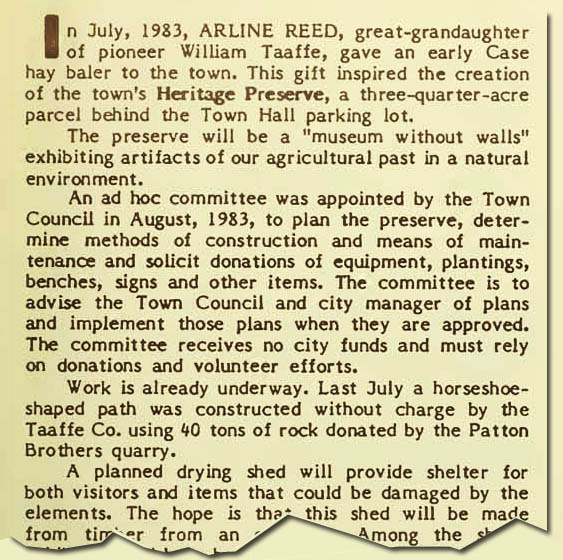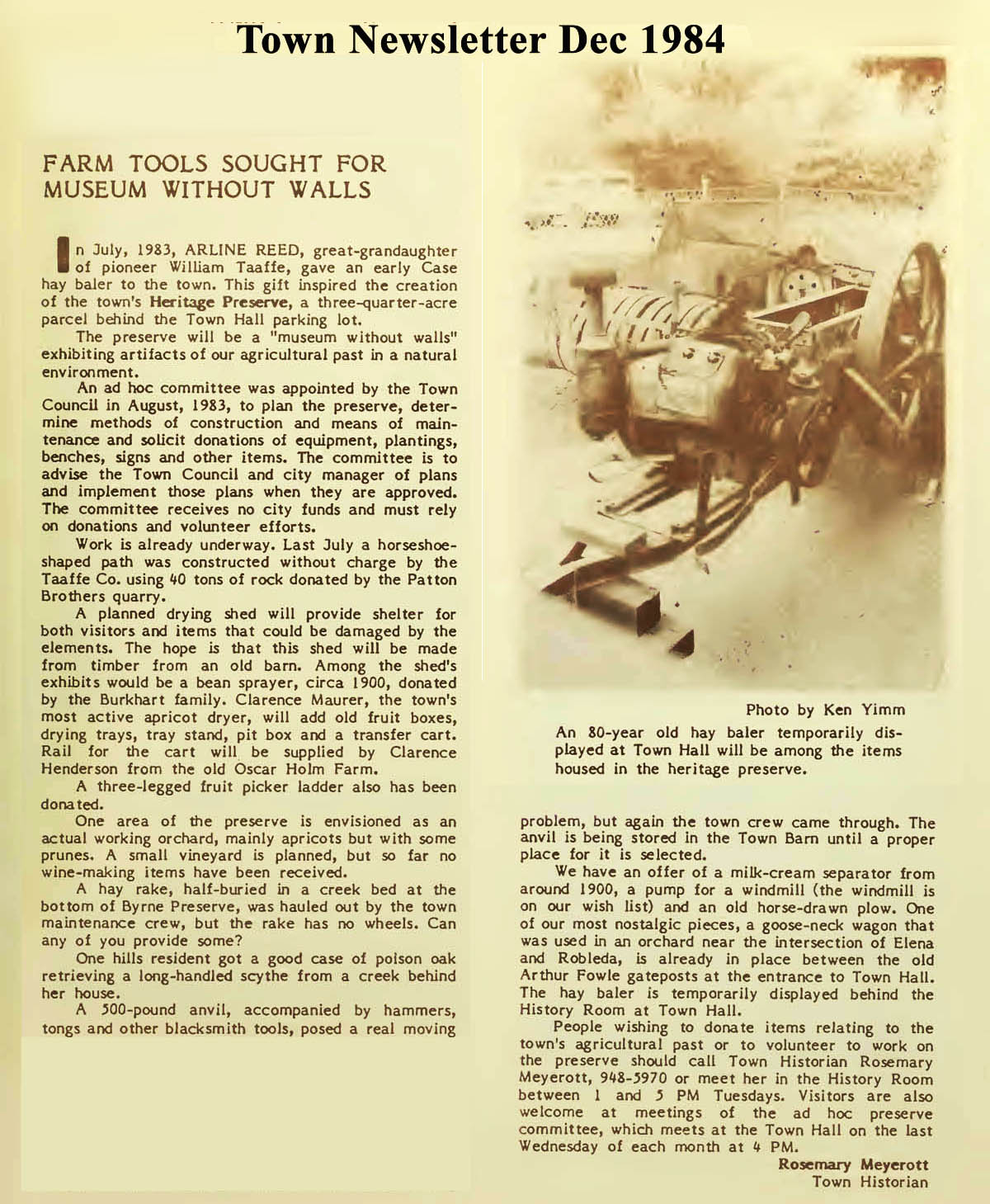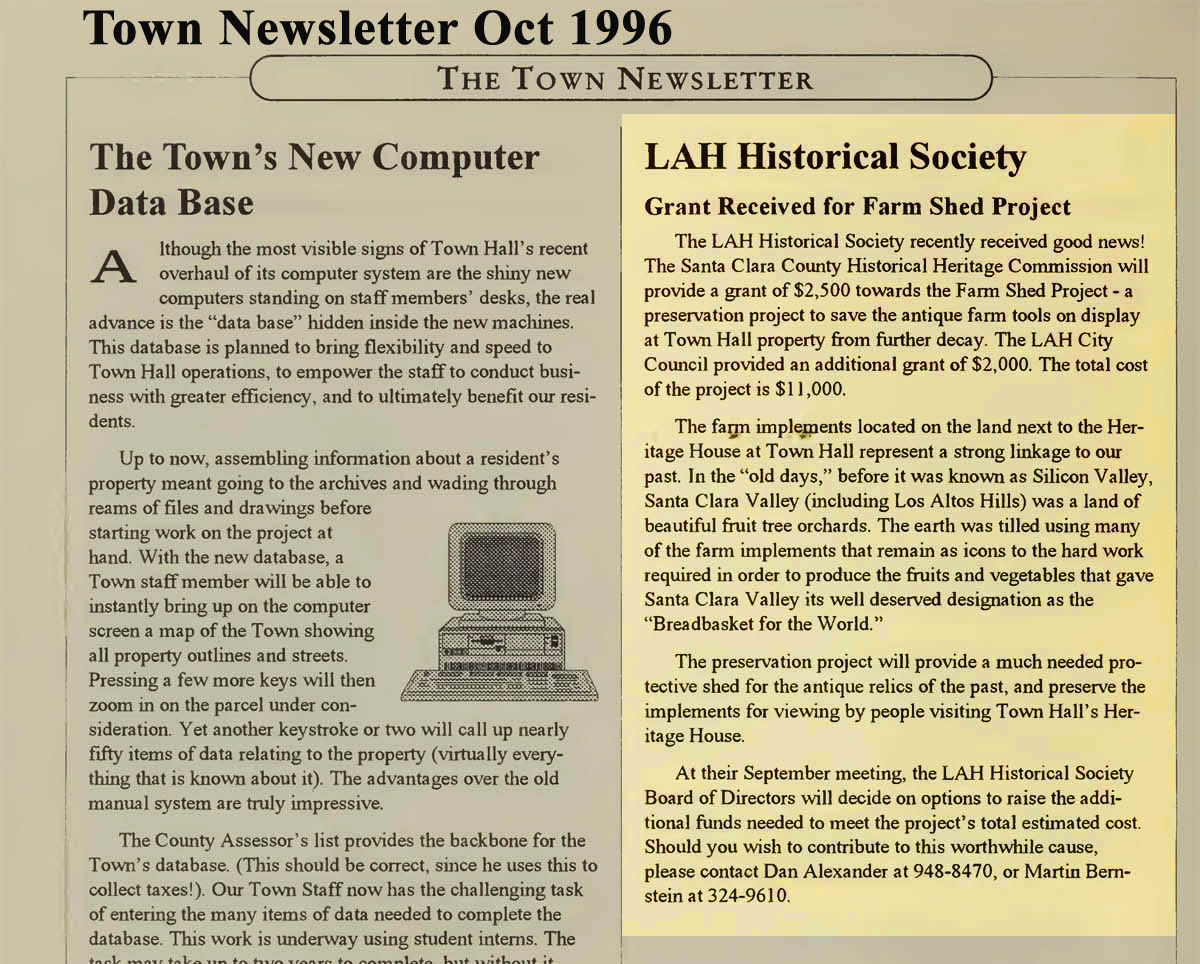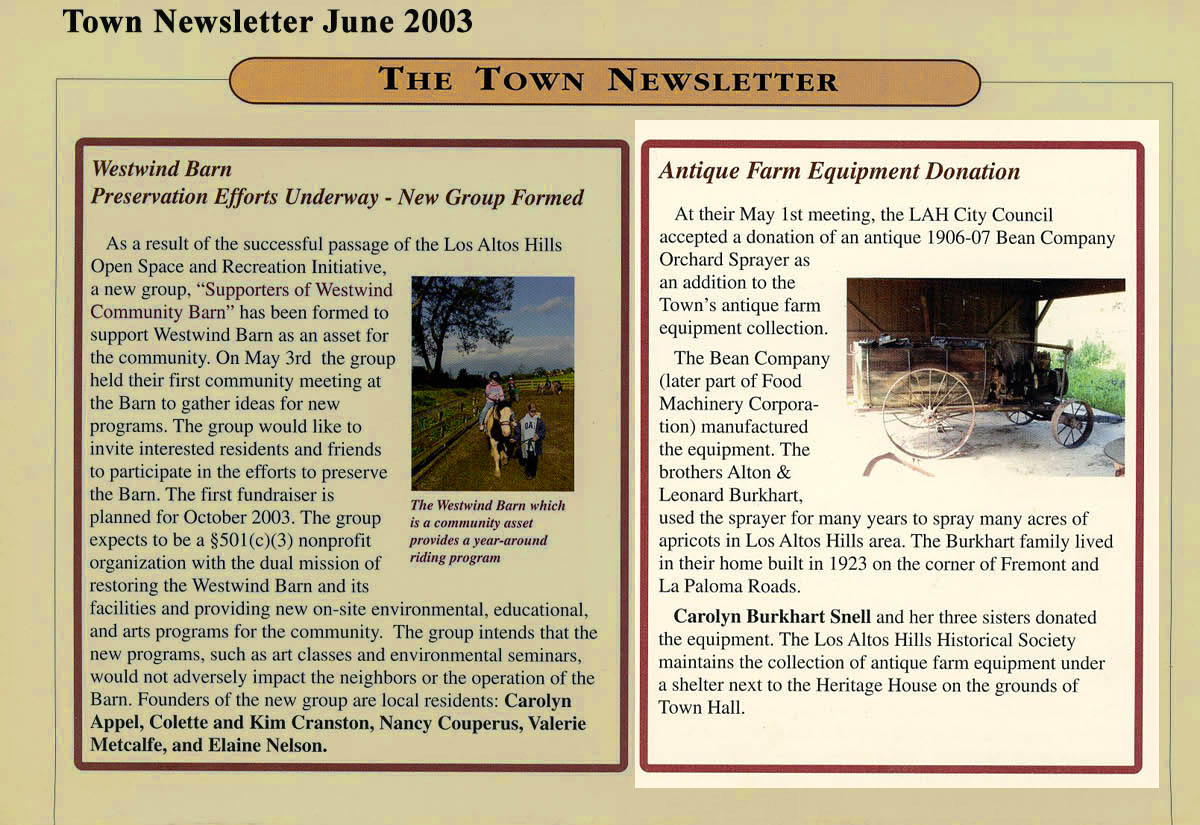(The area next to Town Hall will become "A Museum without walls")
|
The origins... (Extract from Los Altos Hills Town Newsletter, Dec 1984)

This flurry of activity inspired an even bigger gift when a group of local residents - headed by Abigail (Areli) Ahrens and Ed Barnes (Chairman of the Town's Community Relations Committee) and a few others managed to arrange for the donation of "The Eschenbruecher House (Built 1908 on 2nd Street in Los Altos) and to have it moved and repositioned in the area recently designated as the Heritage Park. After moving and repositioning it on a new foundation and repairing the roof, it became established there as "The Heritage House" |
|
“This bungalow was the first house built downtown and the only one to be fired on in World War II,” said McDonald,
pointing to a modest structure, now named the Los Altos Hills Heritage House. William Eschenbruecher built the house on Second
Street in Los Altos in 1908, and it was moved to Los Altos Hills in 1985. In 1944, an errant shell from the Page Mill Army Camp
firing range pierced the roof and damaged the plaster in several rooms.
(Source: Los Altos Town Crier 25 Jan, 2012) |
 |
| Here follow a few extracts from documents in the archives which provide some further background to the origins of this "Museum without walls" and some of the implements collected there. |
 |
 |
 |
 |
| Click on a link below to gp to another page in the album "The Evolution of Town Hall" | |||||